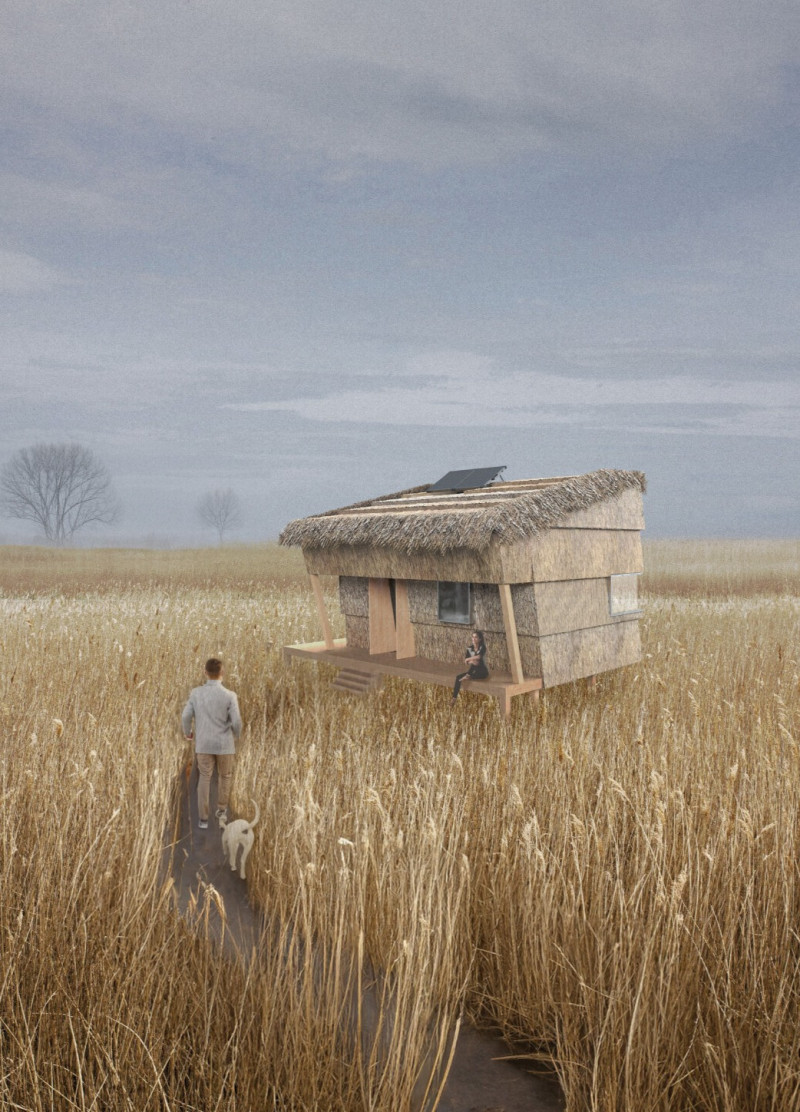5 key facts about this project
As one approaches the project, one can immediately discern how the architecture harmonizes with the landscape. The facade, a blend of materials including concrete, glass, and wood, conveys a sense of transparency and accessibility while maintaining structural integrity. Large windows punctuate the facade, allowing natural light to permeate the interior spaces and establishing a continuous connection between the outside environment and the building's interior. This design choice not only enhances the aesthetic appeal of the architecture but also promotes energy efficiency and well-being among occupants.
The building functions primarily as [insert specific function, e.g., a community center, office space, etc.], designed to accommodate various activities that support the needs of its users. In addition to providing areas for work and collaboration, the layout features communal spaces that foster social interaction, such as lounges and outdoor terraces. These areas have been strategically placed to encourage gatherings, making the project not only a functional space but also a hub for community engagement.
A notable aspect of this project is its commitment to sustainability, which reflects a growing awareness of ecological responsibility in contemporary architecture. By integrating green roofs and rainwater harvesting systems, the design minimizes its environmental footprint while promoting biodiversity. The use of sustainable materials, such as reclaimed wood and low-emission glass, further enhances its ecological profile, showcasing a thoughtful approach to construction that prioritizes both aesthetics and environmental impact.
The architectural design incorporates unique approaches that set it apart from conventional structures. The incorporation of flexible spaces allows for adaptability, ensuring that the building can evolve and meet future needs. This foresight in design translates into the ability to reconfigure areas for different functions, giving the architecture a dynamic quality that can accommodate a variety of events and uses over time. Additionally, the seamless integration of technology within the building enhances the overall user experience, with features that enable smart management of resources.
Landscaping around the project complements the architectural design, creating a cohesive experience between the building and its environment. Native plantings surround the structure, promoting local biodiversity and reducing maintenance needs. Pathways and seating areas invite users to engage with the outdoor space, further blurring the lines between interior and exterior.
In summary, this architectural project encapsulates a thoughtful exploration of function, sustainability, and aesthetic appeal. It represents a response to contemporary needs while honoring the specific attributes of its location. As an example of modern architectural thought, it serves as a model for future designs aiming to balance practicality with environmental and social considerations. For readers interested in delving deeper into the nuances of this project, including architectural plans, architectural sections, and overall architectural designs, it is encouraged to explore the project presentation. Engaging with the architectural ideas presented will provide a broader understanding of the comprehensive vision behind this noteworthy endeavor.


























